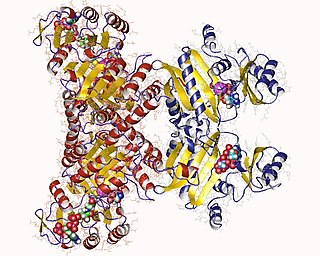| (2,2,3-Trimethyl-5-oxocyclopent-3-enyl)acetyl-CoA synthase | |||||||||
|---|---|---|---|---|---|---|---|---|---|
| Identifiers | |||||||||
| EC no. | 6.2.1.38 | ||||||||
| Databases | |||||||||
| IntEnz | IntEnz view | ||||||||
| BRENDA | BRENDA entry | ||||||||
| ExPASy | NiceZyme view | ||||||||
| KEGG | KEGG entry | ||||||||
| MetaCyc | metabolic pathway | ||||||||
| PRIAM | profile | ||||||||
| PDB structures | RCSB PDB PDBe PDBsum | ||||||||
| |||||||||
(2,2,3-Trimethyl-5-oxocyclopent-3-enyl)acetyl-CoA synthase (EC 6.2.1.38, 2-oxo-Delta3-4,5,5-trimethylcyclopentenylacetyl-CoA synthetase) is an enzyme with systematic name ((1R)-2,2,3-trimethyl-5-oxocyclopent-3-enyl)acetate:CoA ligase (AMP-forming). [1] This enzyme catalyses the following chemical reaction
- [(1R)-2,2,3-trimethyl-5-oxocyclopent-3-enyl]acetate + ATP + CoA AMP + diphosphate + [(1R)-2,2,3-trimethyl-5-oxocyclopent-3-enyl]acetyl-CoA
This enzyme is isolated from Pseudomonas putida .



